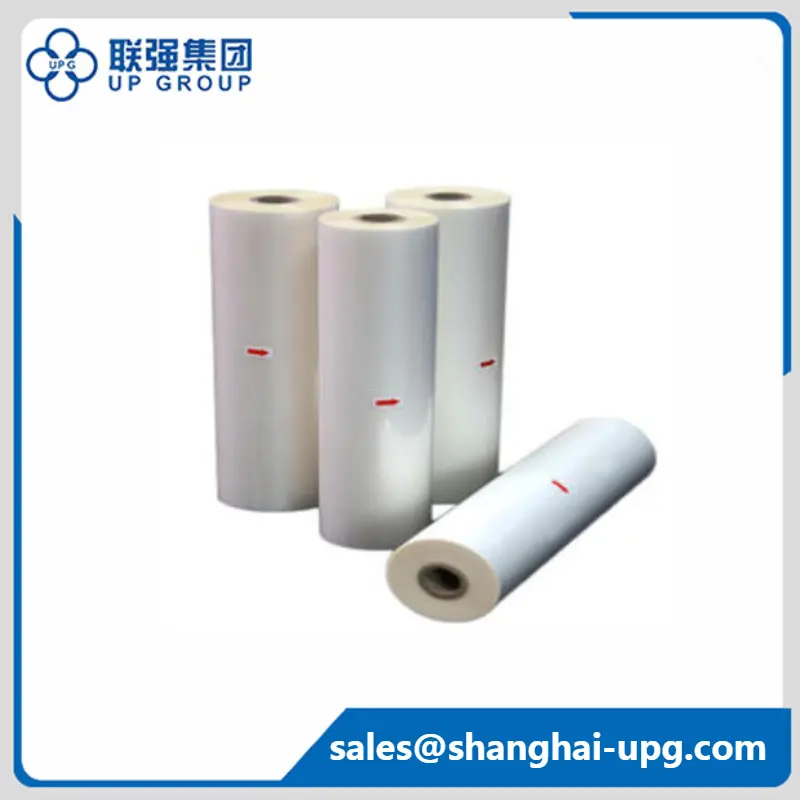Laminated films are widely used materials across industries to protect and enhance printed materials. It is a versatile and durable plastic film that can be applied to paper or other substrates to provide a protective layer. Laminated films come in different types and thicknesses, so it's important to understand the type of plastic used in its production in order to make an informed decision about its application.
What type of plastic is composite film?
Laminated films are typically made from two types of plastics: polyethylene terephthalate (PET) and polypropylene (PP). These plastics were selected for their excellent properties, including clarity, strength, and resistance to moisture and chemicals. PET laminate films are known for their high clarity and rigidity, making them suitable for applications requiring both clear and hard surfaces. PP laminate films, on the other hand, are flexible and offer excellent sealing properties, making them ideal for applications that require a more flexible and heat-sealable material.
Polyethylene terephthalate (PET) is a thermoplastic polymer resin in the polyester family. It is often used in laminate films due to its high tensile strength, dimensional stability and excellent transparency. PET laminating films have a smooth, clear surface that is ideal for applications such as photo lamination, ID cards and promotional materials. In addition, PET laminating films are resistant to moisture, chemicals and abrasion, ensuring that laminated files are protected and durable.
Meantime, please visit our company’s this product, LQ-FILM Bopp Thermal Lamination Film (Gloss & Matt)

This product is non-toxic, benzene free and tasteless,which is environmentally friendly, non hazardous to health.BOPP thermal laminating film produce process does not cause any polluting gases and substances, completely eradicating the potential fire hazards caused by the use and storage of flammable solvents.
Polypropylene (PP) is another commonly used plastic used in laminated film production. It is a versatile thermoplastic polymer known for its flexibility, heat sealability and excellent chemical resistance. PP laminate films are typically used in applications that require a more flexible and heat-sealable material, such as packaging, labels, and bags. PP composite film has a matte or satin surface, which has a different aesthetic from PET composite film. It also has good tear resistance, making it suitable for applications requiring flexibility and durability.
The choice of PET and PP composite films depends on the specific requirements of the application. PET composite films are suitable for applications requiring high transparency and rigidity, while PP composite films are suitable for applications requiring flexibility and heat sealability. Both types of plastic provide excellent protection and reinforcement for printed materials, and their unique properties make them suitable for a wide range of applications.
In addition to the type of plastic used, the thickness of the laminate film plays a crucial role in its performance. Laminated films come in a variety of thicknesses, usually measured in mils or microns. Thicker laminate films offer greater durability and rigidity, making them suitable for applications where laminated documents require frequent handling or outdoor exposure. Thinner laminate films, on the other hand, are flexible and are typically used in applications that require a lighter, more flexible finish.
When selecting the correct type of laminating film, it is important to consider the specific requirements of the application, including the desired finish, level of protection and handling conditions. Understanding the types of plastics used in laminate films and their associated properties can help make an informed decision about the material best suited for the intended application.
In summary, laminate film is a versatile and durable material used to protect and enhance printed materials. It is typically made from polyethylene terephthalate (PET) or polypropylene (PP), each material offering unique properties and benefits. PET composite film has high transparency and rigidity, while PP composite film is flexible and heat-sealable. The choice of PET and PP composite films depends on the specific requirements of the application, and the thickness of the film also plays a crucial role in its performance. By understanding the types of plastics used in laminate films and their associated properties, one can make an informed decision about the material best suited for their specific application.
Post time: Sep-07-2024
